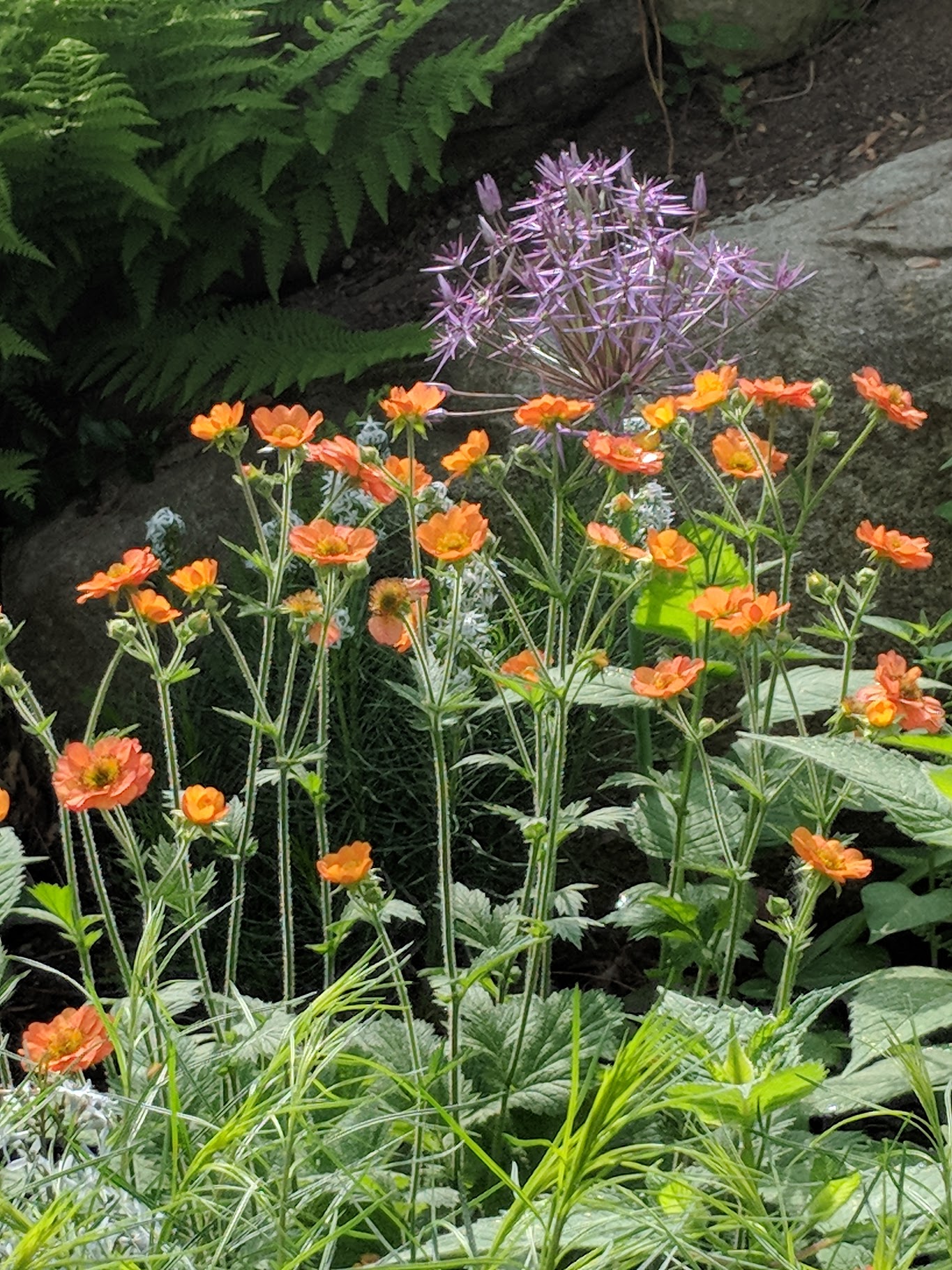WESTERN Exposure (LATE AFTERNOON sun)
In the spring of 2016 my west side garden beds were completely overhauled. We retained the services of Parker Garden Design who removed old, overgrown rhododendrons and expanded the planting bed. The rhodys were lovely when they bloomed, but the remainder of the year they looked a bit tired and didn’t offer much in terms of wildlife habitat.
Removing the rhodys revealed the original boulder retaining wall which is endemic in our neighborhood. By extending the boulder wall all along the side of the house and accenting the natural materials with a Goshen stone path, we brought the west side gardens into balance with the new north side stone wall and planting bed. At completion of the project, we had gained a planting area approximately 40’ x 15’, anchored by an existing paper birch tree ~ the perfect focal point for a new, biodiverse border.
Over the years, I have continued to edit, update and replace perennials, always pushing for a more diverse planting palette that will be beautiful, and will sustain our native wildlife. The video from July, 2021 captures just a small fraction of the insects that thrive in this garden. And when there are insects, there are songbirds which can be heard in the background, including cardinals and the brief chatter of a Baltimore Oriole. Look for the Monarch butterfly (and a bright orange Viceroy feeding deep in the milkweed foliage), as well as bumblebees, hover flies and ants.
year one ~ testing the possibilities of the new space:
A variety of native perennials and shrubs were chosen and the garden thrived. The variegated plant at the front of the border is Aegopodium podagraria, bishop’s weed, which was a holdover from many years prior when a friend from Massachusetts gave me a small plant. It quickly became invasive - BIG MISTAKE! The photos below were taken just a few short months after the removal of the rhododendrons.
year two and beyond:
Two years later, a few changes include removal of the ninebark (not enough direct sun and it wanted to be too big for the space), most of the invasive Bishop's Weed (eradication efforts continue to this day), and the addition of more pollinator favorites, including Persicaria 'Firetail', Asclepias tuberosa, Monarda didyma (bee balm) and dozens of Allium of varying sizes and bloom times. Additions occur annually with an emphasis on succession bloom and pollinator habitat. Amsonia hubrichtii that was planted in 2016 has tripled in size creating a bit of a challenge for smaller surrounding perennials. But it is so gorgeous and turns such a lovely butterscotch color in the fall, that I haven’t touched it….yet.





















